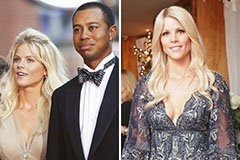Chinese culture is varied and abundant, including a wide variety of traditional dance forms, costumes, and imaginative expressions that have been passed down via generations. At the heart of this social heritage is the mesmerizing appeal of Chinese dance costumes, which play a necessary role in showcasing the deep background and vibrant spirit of Chinese art.
A necessary aspect of lots of Chinese dance forms is the use of props, boosting the performance's aesthetic spectacle and giving depth to the narration. One such prop that is essential to Chinese dance is the fan. Chinese fan dance, which has actually been exercised for centuries, integrates the art of dance with the elegance of the folding fan. These delicate and ornately created followers serve not only as useful devices but likewise as tools of expression-- each movement revealing a story of poise and style. Dancers possess the followers with enchanting skill, developing fluid movements and fascinating visual patterns that boost the total efficiency. The careful coordination of hand motions and fan choreography produces an aesthetic verse that mirrors the consistency and balance essential to Chinese aesthetics.
Similarly, the Chinese dragon dance is an additional traditional art kind that captivates target markets and stands for cultural values. The dragon, often considered an icon of stamina, power, and best of luck, is a main figure in Chinese mythology. When executed, the elaborately designed dragon costume-- crafted from silk and various other lightweight materials-- needs a team of professional dancers who skillfully steer the prolonged figure in a collection of flowing activities that resemble the elegance of a dragon sliding with the skies. Similar to the lion dance, the dragon dance is regularly provided throughout joyful parties, promoting a feeling of unity and delight amongst spectators and participants alike. The elaborate decors on the dragon costume even more boost its appeal, showcasing the virtuosity and craftsmanship that define traditional Chinese cultural expression.
In the realm of performance arts, the crossway of traditional clothing and martial arts is likewise significant. Wushu, a martial art with deep origins in Chinese culture, stresses grace, agility, and the fluidness of movement. While wushu experts usually wear simple training clothes, performances commonly integrate traditional components, allowing professional dancers to put on costumes that showcase their cultural heritage while participating in dynamic displays of athletic prowess. The unison of fighting styles and traditional clothing brightens the smooth mixing of art and discipline, celebrating centuries of Chinese artistry while symbolizing the spirit of physical excellence.
The importance of traditional clothing extends beyond mere aesthetic appeals; it likewise encapsulates the essence of national clothing and Asian costume. Different areas and ethnic teams within China flaunt their own variations and styles of traditional dress, highlighting the nation's unrivaled diversity. Each ethnic minority, such as the Miao, Yao, or Tibetan people, features one-of-a-kind clothing designs that are typically adorned with vivid needlework, elaborate beadwork, and handcrafted devices. These garments frequently serve not just as daily wear but can additionally mark substantial life occasions, such as celebrations and weddings. The appeal of these costumes is that they can narrate concerning the wearer's identity, practices, and cultural heritage, weaving an abundant tapestry of the diverse background of China.
For traditional dancers, costumes are usually custom clothing designed specifically for performance, tailored to enhance the aesthetic effect of their motions. Costume design plays a crucial duty in dance, with the selection of materials, colors, and patterns all meticulously taken into consideration to evoke the intended feelings and styles of the performance.
Via dance, costume, and different artistic expressions, the elegance of Chinese culture continues to reverberate with individuals of all histories and ages. The art of carrying out, embellished in fancy costumes that tell tales of the past, ends up being a bridge in between generations. Each professional dancer, whether performing the lion dance, taking part in the graceful circulation of wushu, or revealing themselves through the art of fan dance, takes a breath life into olden traditions that commemorate resilience, unity, and the withstanding human spirit.
The expedition of traditional Chinese dance and costumes likewise welcomes a deeper admiration of the significance integral in shades and patterns, which mirror the viewpoints and worldviews loved by Chinese culture. As seen in the significance of shades, red represents good ton of money and happiness, while blue frequently represents elegance and serenity. Comprehending the social context of these elements motivates better regard for the art forms and their professionals, highlighting the relevance of cultural preservation and the power of storytelling with dance and clothing.
In addition, the beauty of traditional Chinese dress extends beyond efficiency, penetrating day-to-day life and society. Celebrations throughout the year, such as the Lantern Festival, commonly display stunning traditional garments and artistic screens, enlightening streets and public spaces with dynamic colors and lights. Lanterns, frequently handcrafted and intricately designed, signify hope, revival, and the inviting of brighter days. Throughout such events, it prevails for participants to wear traditional attire that straightens with the celebration's themes, further unifying the community through a common appreciation of their social heritage.
In a globalized world, the ongoing recognition for and exploration of traditional Chinese clothing and efficiencies work as a suggestion of the value of cultural identification. As artists and artisans work to revitalize these classic practices, they enlighten new generations concerning their heritage, promoting a feeling of pride and link to their origins. Traditional dance and costume not only delight however additionally carry the weight of historic narratives, lessons for future generations, and a tank of common cultural understanding.
Along with the rich background of traditional clothing, Chinese dance functions as an effective expression of social identity. Among one of the most visually exciting forms of Chinese performance art is the lion dance, which often goes along with parties such as the Lunar New Year and other joyful celebrations. The lion dance, performed by competent professional dancers who imitate the motions of a lion, is not just a demonstration of agility and stamina yet also a reflection of expect great fortune and prosperity in the upcoming year. The colors and styles of the lion dance costume are symbolic, with lively reds, yellows, and environment-friendlies standing for riches, durability, and joy. The exaggerated functions of the lion's head, adorned with mirrors and ornamental materials, are indicated to fend off unfavorable spirits, improving the performance's spiritual significance and securing favorable power for the area.
In final more info thought, Chinese dance costumes, ancient clothing, and the numerous vivid efficiencies encapsulate an abundant heritage that remains to captivate and motivate both target markets and performers alike. From the breath-taking visuals of lion and dragon dances to the refined beauty of fan dancings, Chinese culture is a vast ocean of artistic expressions that incorporate centuries of practice. The national clothing reflects a variety that can only be located in a country as large and diverse as China, showcasing the special stories and identifications that stay within each ethnic group. As time marches onward, the dedication to preserving these traditions through efficiency art, costume design, and social celebrations makes sure that the vibrancy of Chinese society lives, captivating hearts and minds worldwide.
 Ralph Macchio Then & Now!
Ralph Macchio Then & Now! Elin Nordegren Then & Now!
Elin Nordegren Then & Now! Nancy McKeon Then & Now!
Nancy McKeon Then & Now! Tyra Banks Then & Now!
Tyra Banks Then & Now! Kerri Strug Then & Now!
Kerri Strug Then & Now!